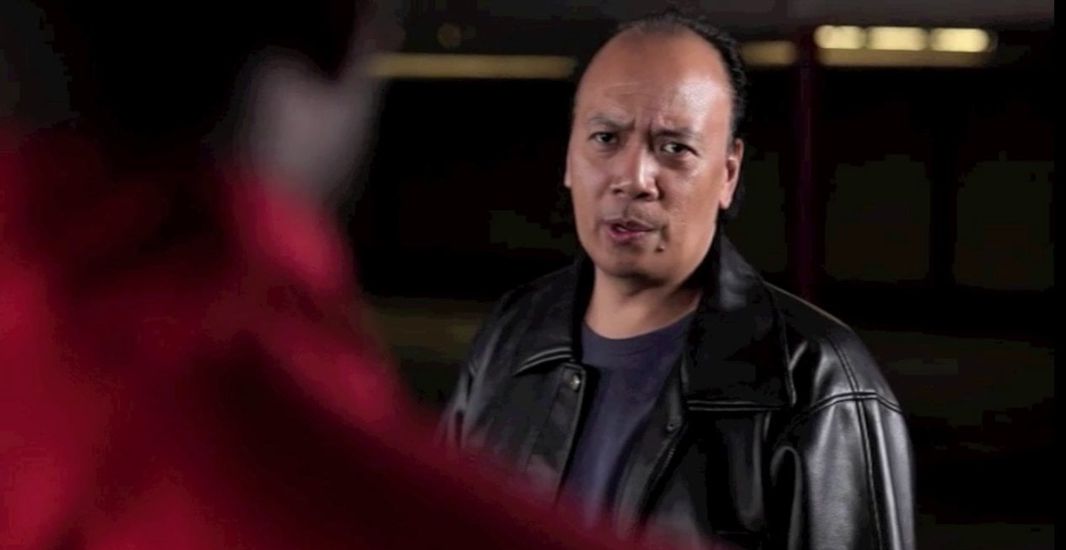 I recently did a “Minute with the Master” interview with my buddy, John Kreng.
I recently did a “Minute with the Master” interview with my buddy, John Kreng.
Here’s a quick summary of John’s bio followed by the interview:
Martial arts expert and aficionado John Kreng has been training since he was a child, earning him black belts in Tang Soo Do and Te-katana Ju-Jitsu, These skills, along with his lifelong passion for action cinema, have led him to a dynamic career as a stuntman, fight choreographer and stunt coordinator, working with the likes of Steven Spielberg, David Carradine, Jet Li, Tsui Hark, and Yuen Cheung Yen and Roger Corman. He also arranged and choreographed all the action for his industry peers as the Stunt Coordinator of the 2009 Stuntwomen’s Awards.
Over 25 years of martial arts and filmmaking expertise has finally led him to write the ultimate primer, Fight Choreography: The Art of Non-Verbal Dialogue, published by Cengage. The only textbook of its kind in the history of cinema, Kreng finally reveals the secrets to the true art of how action scenes are created. The reaction to the book has led him to world acclaim, already gaining Kreng a cult following in Europe as well in his native China.
The industry respect for this book, along with his vast knowledge and extensive work in the action film genre, recently led to an appearance on A&E’s BIOGRAPHY: STEVEN SEAGAL, where Kreng commented on the action icon’s film career. Kreng and his book have also been featured in BLACK BELT, MA TRAINING, INSIDE KARATE, and IMPACT (UK) magazines.
Tom: How have fighting games missed their true potential?
John Kreng: I feel the majority of fighting games have not changed since the 8 bit days as far as strategy and complexity. Sadly, I feel that if you play one fighting game, you have played them all because I feel fundamentally, they are all clones of each other with only cosmetic and slight tweaks to call it their own. Let’s be honest, there are much more similarities than differences between all fighting games. Sure, you have different characters and techniques, but the style of play and approach to the game play is still the same and has not changed since the 8 bit days. Sure, it’s more complex and the graphics are more detailed, but the style of play is still the same and that bores the crap out of me. There are many more elements involved in a real fighting situation that producers and designers can extract and put into a fighting game to immerse a player that are missing in a fighting video game.
Tom: How does a non-fighter begin to try and understand what is behind a good fight setup or scene?
John Kreng: Simple. My belief is you are only as smart as your last fight. Take classes in different fighting arts, learn how to fight, then take fight choreography classes. Your knowledge and experiences are what you bring to the game. By watching most fighting games, I can tell most designers and producers do not understand the basic principles of fighting because nothing real is ever applied into a fighting game to help immerse the player into the game. To me, it is completely fantasy-like with no real type of footing or the repercussions of real fighting. It’s as if the creators last fight was in grade school and as adults they are reliving that experience as a fantasy because it was so long ago and far removed. For example, in a fighting game there are no fakes thrown to draw an opponent and create openings. Footwork and closing the gap between your opponent is not an issue. The strategy to winning a fight is very simple and does not stress any kind of individualism or style with the player. You also cannot visually tell the difference between a light, medium, and hard technique thrown.
Tom: Your 3 favorite fight games and why?
John Kreng: I’m a retro gamer, so I will have to turn back the clock on this question. First would be Street Fighter II on SNES. The controls were sensitive and quick to the touch and I liked the visual aesthetics of the characters. Each character had their own strengths and weaknesses and when you chose a certain character you had to understand them in order to win with them. There are so many little things with that game that added up to make it so addicting for me and made it an experience I thoroughly enjoyed. You can also say the same thing for Samurai Showdown II. When I was working at SNK, I was an addict and played it almost daily. Those guys knew how to make fighting games at the time. I also thought King Of Fighters introducing the team fighting element is very original where you can pick your own set of 3 fighters to fight with. I was never a Mortal Kombat fan. I felt the graphics were pretty cheesy and nowhere close to being smooth, while the violence was too gratuitous.
Tom: How can understanding how to construct a fight scene help you in other areas of staging a scene or planning a level?
John Kreng: Fight choreography is about constructing a fight scene that tells a story without the use of dialogue. It’s filled with different emotions along with varying tempo and rhythms, much like a jazz riff. Now, many people do not understand that concept and just put together a series of flashy moves. That’s not fight choreography but being gratuitous and superficial. If you do that the problem is you will always have to top what you just did for the next sequence and eventually you run out of ideas or techniques. It’s a bad disease called cool-move-itis. The techniques used for a character defines their personalities and traits, much like a pro wrestler has signature moves that differentiates themselves apart from the other wrestlers.
Tom: Favorite THQ game: Home Alone 2 or Swamp Thing?
(*Disclaimer – John and I had NOTHING to do with the development of these games …whew …)
John Kreng: You are bringing back too many traumatic memories of us setting up the QA helpline, Tom! No question… without a doubt… none of these games have a thing on PIT FIGHTER… for (drum roll sound)… Game Boy! The Linda Blair puke green background and muddy brown images are SO REALISTIC I thought I was fighting alongside the characters! I’ve gotta go back to therapy after this, because you brought up some buried issues that I need to resolve. Thanks buddy.
Tom: Six million dollar man Vs. Inframan — and the winner is?
John Kreng: No contest…The Super Inframan! His skills were far more advanced than Steve Austin (not the pro wrestler). Inframan could’ve grown to 30 stories high whenever he wanted and squashed Stevie like a cockroach! Did you know that film critic Roger Ebert lists Inframan as one of his all time guilty pleasures? I saw him at a book signing about 5 years ago and gave him a VCD of Inframan and his eyes lit up like he was a 5 year old kid on X-mas morning! We’re all geeks at heart. So don’t be ashamed of it, embrace it, and make it work for you by following your bliss in life!
Sweet. Thanks very much, Master Kreng! (He hates it when I call him this …)






